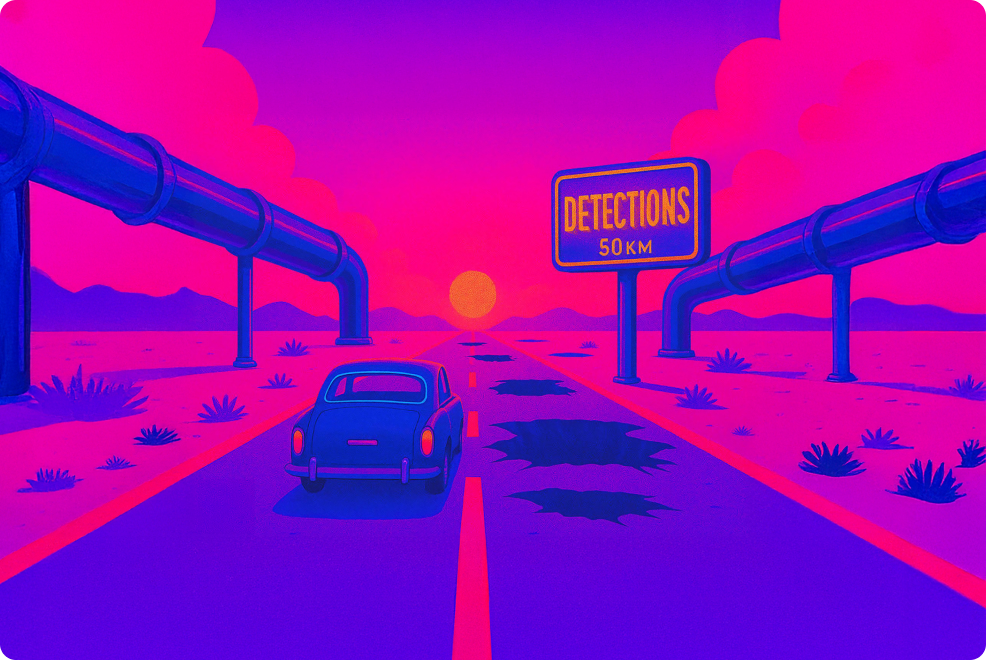Everyone's Building Detections. No One Checking if the Data Behind Them is Even Usable.

Everyone’s building detections. No one’s checking if the data behind them is even usable. That’s the silent failure in cybersecurity.
We obsess over rules, SIEMs, and analytics while quietly ignoring the integrity of the data pipeline underneath it all.

Here’s why your detection stack is only as smart as your pipeline and why that should scare you more than it does:
We keep tuning detection rules, scaling SIEMs, and obsessing over threat models while ignoring the quality, completeness, and timing of the data that feeds them.It’s not your detection logic that’s broken. It’s your pipeline.
You Don’t Need Smarter Detections. You Need Better Data.
Security teams spend months fine-tuning rules and aligning with MITRE ATT&CK. But most missed alerts don’t happen because the logic was wrong - they happen because the data was incomplete, delayed, or malformed.
- A missing field breaks correlation.
- A log arrives 20 minutes late.
- A critical event is stripped of context.
- A misclassified source goes unparsed and ignored.
These are pipeline problems, not detection problems. And the industry is barely talking about them.
The Silent Gaps: What Traditional Pipelines Miss
Legacy pipelines were never built for security outcomes. They were built to move data from point A to B - not to validate it, enrich it, or align it with detection needs.
That’s why many security environments quietly suffer from:
- Field loss or distortion. Format drift, parsing failures, and inconsistent schemas silently break detections.
- Context-free data. No identity, no asset labels, no location - which means rules lack what they need to decide.
- Delayed ingestion. Batch pipelines add built-in lag. Alerts come late, sometimes after damage is already done.
- Noise overload. Duplicate events and irrelevant telemetry pollute SIEMs, distract analysts, and bury real threats.
You can’t solve this downstream. No SIEM rule can correlate what never arrived, and no dashboard can surface context that was never captured.
What a Smart Pipeline Actually Looks Like
Forget the buzzwords. A smart pipeline isn’t about AI - it’s about accountability for the data before it hits your SIEM, XDR, or SOAR.
A real security-grade pipeline should:
- Ingest broadly, from cloud to endpoint to identity.
- Enrich in motion, tagging events with user, asset, and geolocation metadata.
- Transform with intent, normalizing to schemas like CIM or ECS.
- Filter noise, preserving fidelity where it matters and reducing what doesn’t.
- Monitor itself, alerting on stream health, format drift, or dropped events in real time.
Why Smart Pipelines Matter in Threat Detection
Modern detection depends on three things: timing, context, and confidence. All of them start at the pipeline.
Smart pipelines enable:
- Real-Time Monitoring. Logs are streamed, enriched, and analyzed as they flow - not minutes or hours later.
- In-Stream Anomaly Detection. Behavioral models run during transit to catch deviations immediately.
- Automated Response. Pre-scored events can trigger blocks or alerts before an analyst ever logs in.
For example: a user logs in from New York, then from Singapore five minutes later. With the right pipeline, that’s flagged as impossible travel instantly - not hours later when the SIEM finishes correlating.
If your pipeline can’t provide this, no detection logic on top will make up for it.
Security Maturity Begins at the Pipeline
Security leaders love to talk about detection coverage, automation, and threat intelligence. But none of it matters if your pipeline is broken.
Maturity starts with:
- Knowing what data you have.
- Knowing what’s missing.
- Ensuring every system receives the right data, in the right format, at the right time.
Until that’s true, you don’t have a detection stack - you have a detection hope.
Final Thought: Your Pipeline Is Already in the Kill Chain
Attackers don’t just exploit vulnerable endpoints. They exploit visibility gaps - the dropped fields, broken schemas, and delayed logs that leave your rules blind.
Your pipeline is part of your threat model.
It’s already in the kill chain.
It’s time to treat it that way.



